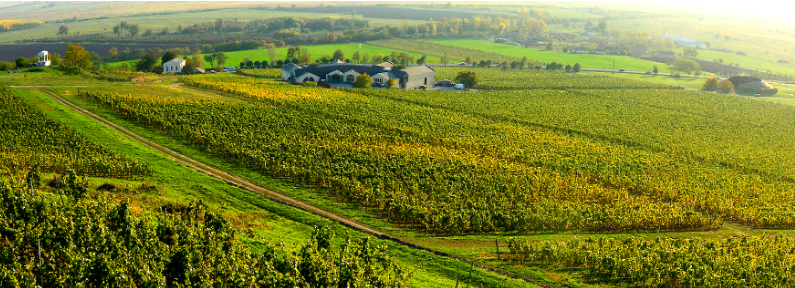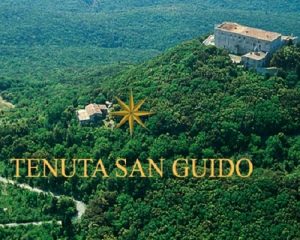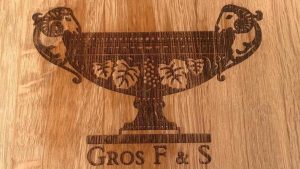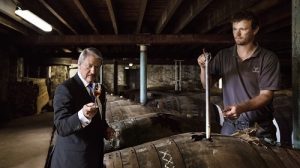
In north-east Hungary, close to the border with Slovakia, Disznoko is one of the Tokaji region’s vastest estates. It’s also one of the most renowned. We take a closer look at this Hungarian first growth.
This single contiguous vineyard is located to the south of the hills of the Tokaj region, on volcanic soils of clay and gravel. The south-facing vineyard is protected from the cool northern wines by the Zemplén hills: this area is known as one of the three most propitious places for producing “Aszu” in the entire region, a region that is purported to be the first appellation in history. In 1732, the Disznoko estate – which has always been owned by Hungary’s most influential families – was recognized as a first growth by King Charles III.
Axa Millésimes – owners of Châteaux Pichon-Longueville, Suduiraut, Pibran, Domaine de l’Arlot, Quinta do Noval, Quinta do Passadouro, Outpost – bought the domain in 1993 and totally renovated it. A new winery was built in 1995, with the latest technological innovations.
The winery was designed by celebrated architect Dezső Ekler and was conceived especially for the vinification of these wines. Each of the three floors is dedicated to one step of vinification. The grapes thus arrive at the ground floor, before dropping into pressers on the floor below, by gravity, which protects them from being damaged. The must rests in stainless-steel vats prior to fermentation; they are then taken down into the underground cellars. The estate’s wines are matured in casks, in Hungarian oak as well as some barrels from Château Suduiraut (Sauternes)!
Agronomist Laszlo Meszaros arrived at the domain in 1995 and has managed the domain since 2000. He has raised the quality of the wines to their highest level yet, now renowned for their pure, fresh style, which strikes a perfect balance between the purity of fruit, the blend of varieties and the complexity of botrytis.
The estate farms the following four grape varieties: Furmint, Harslevelu, Zeta and Sagamuskotaly, with a majority of Furmint and Harslevelu. Furmint is the region’s traditional variety, representing 60% of vines. It has a very thin skin, ripens easily and retains a very good level of acidity when when affected by botrytis. Harslevelu, on the other hand, represents 30% of the Tokaj region’s planted surface area. While it produces fewer grapes with noble rot, it is more aromatic, bringing floral and vegetal notes to the blend.
More about Tokaji
Let’s make the most of this opportunity to revise the history of the region and its wine! With 5,500 hectares of vines to the north-east of Hungary, Tokaj is known for its sweet wines produced with grapes affected by raisining, when grapes are left to dry by the sun, concentrating their sugars.
Legend has it that in the early 17th century, Zsuzsanna Lórántffy (wife of Prince György Rákóczi I and one of the region’s main landowners) and her vineyard manager, László Máté Szepsi decided to postpone harvests because of an imminent invasion from Turkey. When they finally harvested the grapes, they were completely shvrivelled and – more importantly – botrytised. They decided to use these grapes – known as “aszu” grapes – to make wine, and Tokaj was thus born.
The Tokaj region is actually the birthplace of one of the world’s first classification systems for wine. The 1700 classification organized the vineyards into first, second and third growth; still today many of these vineyards – such as Disznoko – are highly prised.
The main characteristic of Tokaji resides in the fact that the grapes are not vinified immediately. The botrytised grapes are harvested one by one over the course of several times passing through the vines. They are stored separately before being reincorporated into a dry wine harvested and produced earlier in the season. This unusual blend kicks off a second fermentation. The number of ‘puttonyos’ of aszu grapes added to each barrel determines the degree of concentration and the quality of the wine: three, four, five, six puttonyos, or the richest and most concentrated of them all, aszu eszencia.
Domain Disznoko produces a third of each style of wine: dry, late harvest (with varying degrees of puttonyos and aszu. We thoroughly recommend you try one of their wines – you will be blown away by their complexity.



